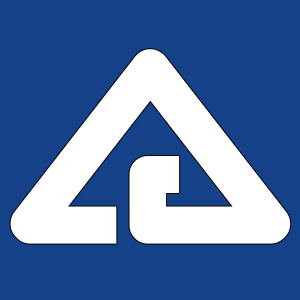

- Rentals
Lifting Equipment General Construction Equipment - For Sale
- Services
- Lift Specifications
- Resources
- Newsletter
- Contact
- SEARCH
- RESOURCES
- Latest Newsletter
- Lift Specs
- Safety Inspections
- Aerial Lift Selector
- MEWP Standards
New Standards for Mobile Elevating Work Platforms
Review and analysis of pending new standards for Safe Use, Operation, Inspection, Testing, Maintenance, Design and Personnel Training of Aerial Lifts or Mobile Elevating Work Platforms (MEWP)

Major revisions of Safe Use of Mobile Elevating Work Platforms Standard (A92.22) and of Standard A92.24 - Training Requirements for the Use, Operation, Inspection, Testing and Maintenance are going into effect in early 2018. Standard A92.20, governing the design of mobile elevating work platforms is expected to follow.
The changes come from ANSI (United States) and CSA (Canada) governing bodies and aim to further promote safe design and operation of Aerial Lifts in North America.
Aerial Lifts have been officially referred as Aerial Work Platforms (AWP). Now Aerial Lifts are going to be called Mobile Elevating Work Platforms, (MEWP's).
Once the new standards go in effect, manufacturers and brands will have 1 year to assent. These changes will affect the following:
- Equipment Design Standards
- Safe Use, Risk Assessment and Rescue Planning
- Training of Operators and Supervisors
- Maintenance and Repair Personnel Training
1. Equipment Design Standards
All MEWP's will be required to have on-board Load Sensing System to continuously monitor the weight in the platform and disable certain functions when load limit is reached.
All boom lifts will have to be equipped with Dynamic Terrain Sensing to automatically disable certain functions when out of their slope limit.
Introduction of "Indoor Only" designation would allow for development of lighter-weight and more compact MEWPs. These MEWPs cannot be used in conditions where they might be subjected to any wind.
2. Safe Use, Risk Assessment and Rescue Planning
The user must develop a Safe Use Program specific to MEWPs which must include, but not be limited to:
- Performing a site risk assessment
- Selection, provision, and use of a suitable MEWP and associated equipment
- An assessment that the supporting surface can support the weight of the MEWP
- MEWP maintenance including inspections and repairs as required
- Inform the operator of local site requirements and warn and provide the means to protect against identified hazards
- Have a trained and qualified supervisor to monitor the performance or the work of the operator
- Prevention of unauthorized use of the MEWP
- Safety of persons not involved in the operation of the MEWP
The lift users and operators must develop a written rescue plan that will be carried out in case of machine breakdown, platform entanglement, or fall from platform. This written plan must be a part of the company's training manual.
All lift operators must receive training on procedures to follow if they fall and await rescue or witness another worker's fall. This plan must limit the time that a properly restrained worker hangs suspended in the air. Rescue plans can include the following:
- Self rescue – by the person involved
- Assisted rescue – by others in the work area
- Technical rescue – by emergency services
3. Training of Operators and Supervisors
The MEWP operator must ensure that all occupants in the platform have a basic level of knowledge to work safely on the MEWP.
- The requirement to use fall protection and the location of fall protection anchors
- Factors including how their actions could affect stability
- Safe use of MEWP accessories they are assigned to use
- Site specific work procedures the occupants must follow related to the operation of the MEWP
- Hazards related to the task at hand and their avoidance
- Manufacturer's warnings and instructions
- At least one of the occupants must be provided with the knowledge to operate the controls in an emergency where the operator can't
The supervisor must ensure that all MEWP operators are trained in the following areas:
- Proper selection of the correct MEWP for the work to be performed
- The rules, regulations and standards that apply to MEWPs, including the provisions for safe use as defined in ANSI A92.22 Training and Familiarization, and the work being performed
- Potential hazards associated with use of MEWPs and the means to protect against identified hazards
- Knowledge that the manufacturer's operating manual(s) are an integral part of the equipment and need to be stored properly in the weather resistant compartment on the MEWP
4. Maintenance and Repair Personnel Training
Users must ensure that maintenance and repair personnel are trained by a qualified person to inspect and maintain the MEWP in accordance with the manufacturer's recommendations, as well as ANSI and CSA standards. In the case where a MEWP is being rented, arrangements must be made by the owner to identify the entity that will be responsible for the inspections and maintenance activities described in the standard:
- Frequent Inspections — When the MEWP is put into service, has been out of service for three months or has been in service for three months or 150 hours whichever comes first.
- Annual Inspections — Performed no later than 13 months after the previous Annual Inspection
Conclusion
These changes will have an industry-wide effect from top to bottom, from manufacturer to end user. And with change comes the opportunity and responsibility to adapt and improve. Disregard of, or ambivalence to these changes will most certainly put one behind others who are more proactive. And in doing so, compromising safety as well as efficiency.
This post presents a brief overview of the upcoming changes that the entire industry will be facing. We will be happy to assist you in understanding the new requirements and help you to navigate through the changes.